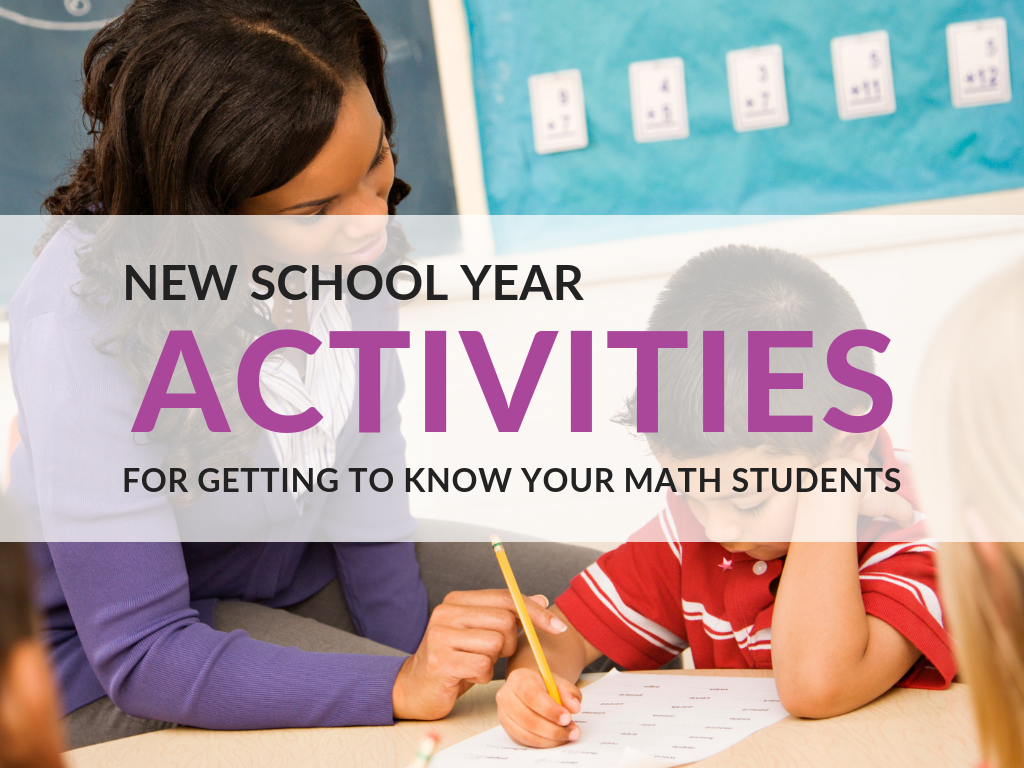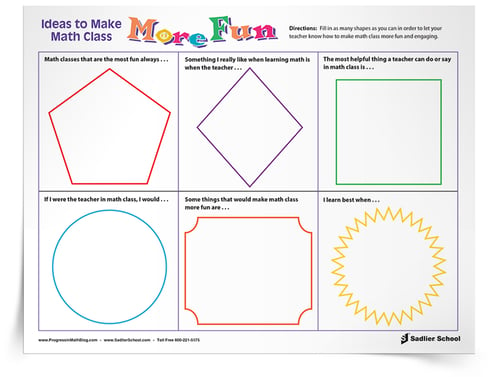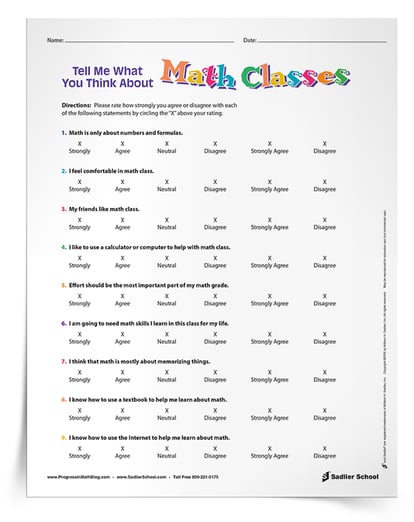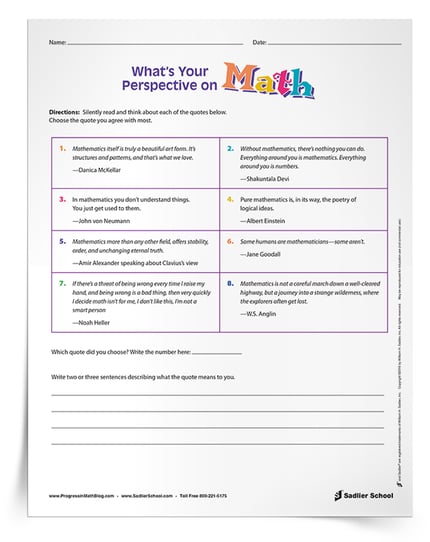July 29, 2025 other-professional-development, other-seasonal
5 New School Year Activities to Get to Know Your Math Students
By: Jeff Todd
As each new year approaches, teachers are faced with the question of how to get started with their new students. While the “how” is important, spending time reflecting on what your students need to know about yourself, your classroom, and your expectations, will likely illuminate a method for delivery. The first day and week will set the tone for the entire school year, so choosing the perfect activities to get to know your math students is critical. The chosen new school year activities will convey your own feelings about math, your values, and your classroom expectations to your students. Every teacher’s goal should be to send this message: “I am interested in who you are and what you think.”

Below are five meaningful activities that help math educators learn about their students while fostering a supportive classroom environment from day one. These tasks can be used in both in-person and virtual settings and offer powerful ways to build community, assess student attitudes, and create a foundation for collaboration and growth.
New School Year Activities to Get to Know Your Math Students
Creating a nurturing and inclusive classroom allows students to take academic risks, engage in productive struggle, and develop a growth mindset—all of which are especially important in mathematics. Research consistently shows that strong teacher-student relationships contribute to better attendance, academic performance, engagement, and behavior. These five activities not only help build those relationships but also provide early insight into students' perceptions of math and their learning needs.
#1 Make Math Fun Survey
This visual survey invites students to respond to prompts placed inside six geometric shapes. Each question explores prior experiences with math, preferences in learning styles, and emotions tied to the subject. Teachers can encourage students to begin with the prompts they find most interesting, then complete the full organizer. Reviewing responses allows educators to better understand how students feel about math and tailor instruction accordingly.
#2 Likert-Style Math Survey
This simple survey presents a series of math-related statements. Students indicate their level of agreement, offering a snapshot of their current mindset. Responses can be analyzed individually or compiled in a spreadsheet to identify class-wide trends, track changes throughout the year, or support self-evaluation efforts.
#3 Math Quotes Discussion Starter
A set of eight thought-provoking quotes introduces a wide range of beliefs about math—from rigid to creative. Students select a quote that resonates with them, write about its meaning, and discuss their reflections with peers. This activity creates space for students to challenge assumptions, reflect on personal experiences, and broaden their understanding of what math can be.
The quotes can be used to start an extended think-pair-share in the following suggested sequence:
-
Hand out the quotes.
-
Call on different student volunteers to read the quotes aloud.
-
Ask students to silently think about the quotes, to choose one that resonates with them, and to write a couple of sentences about what it means to them.
-
Have student pairs share with each other their quotes and why they chose them.
-
Open the discussion up to the class for students to share their view of mathematics and math class.
-
Tally the number of students who chose each quote to summarize the class discussion about the different ways math can be viewed.
#4 Number Talk
By sharing a single number (-2, ⅔, 0, etc.) in an open ended discussion, you will be able to assess what your students remember from the previous year and begin to learn about the comfort and ability level of each of your students. A number talk is a great way for every student to be vocal in the math classroom and for you to get to know the personalities of each of your different groups of students!
To conduct this task, you may use a whiteboard and dry erase markers or a poster paper and markers to save each class’s thinking and display them around the room. Students are to think (no paper and pencil) about what comes to mind when they see the number. Ask them to consider the quantity, operations, representations, etc. depending on what is appropriate for their grade level. After a few minutes of independent thinking, go around the room and allow every student to share an idea. Accept every student’s contribution with a positive affirmation and record them on the board. Throughout the sharing, you may choose to pause and discuss ideas further, connect multiple students' ideas, or ask questions aloud to further provoke thinking.
#5 Math Autobiography
This reflective writing task encourages students to share their personal math journeys—both past and present. Prompts explore emotions, challenges, strategies, and previous classroom experiences. The final product can be typed, handwritten, or even turned into a classroom display, depending on time and grade level.
Have students reflect and write about some or all of these questions and topics either in class or as homework:
- Describe some of the most memorable moments that you have had related to math both good and bad.
- What do you think about mathematics? If math were an animal, what would it be and why?
- Describe some of the experiences you have had with math teachers both good and bad
- How do you feel while you are in a math classroom? Scared? Nervous? Excited?
- What is something that you struggle the most with while you are learning math?
- What is something that makes math easier to learn for you?
- If you were to define mathematics to someone who does not know what it is, what would you say?
- Tell me anything else that you would like me to know about you!
In Summary
The activities introduced in the first week of school lay the groundwork for the culture, trust, and growth that will follow. By using these five back-to-school math activities, teachers can communicate care, foster student voice, and build a collaborative learning environment. More than just icebreakers, these tasks open a window into students’ thinking and set the stage for a year of meaningful mathematical exploration!








